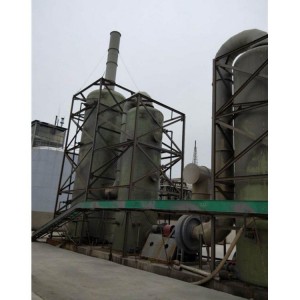Centrifuge is the use of centrifugal force, separation of liquid and solid particles or liquid and liquid mixture in the components of the machine.
Centrifuge is mainly used to separate solid particles from liquid in suspension.Or the separation of two liquids of different densities from each other in a emulsion (for example, the separation of cream from milk);It can also be used to remove liquid from wet solids, such as washing wet clothes with a washing machine;Special overspeed tube separator can also separate different density of gas mixture;Some sedimentation centrifuges can also classify solid particles according to density or particle size by taking advantage of the different settling speed of solid particles in liquid.
Centrifuges are widely used in chemical industry, salt, food, pharmaceutical, mineral processing, coal, water treatment and shipping departments.
Edit the working principle of centrifuge
According to the structure and separation requirements, industrial centrifuges can be divided into three categories: filtration centrifuge, settling centrifuge and separator.A centrifuge has a cylinder, called a drum, that rotates at high speeds around its axis and is usually driven by an electric motor.After suspension (or emulsion) is added to the drum, it is rapidly driven to rotate at the same speed as the drum, and the components are separated and discharged separately under the action of centrifugal force.Usually, the higher the drum speed, the better the separation effect.
The action principle of centrifuge has centrifugal filtration and centrifugal settlement two kinds.Centrifugal filtration refers to the centrifugal pressure generated by suspension under centrifugal force field, which ACTS on filtration medium, making liquid become filtrate through filtration medium, while solid particles are trapped on the surface of filtration medium, thus achieving liquid-solid separation.Centrifugal sedimentation is to realize liquid-solid (or liquid-liquid) separation based on the principle that components with different density of suspension (or emulsion) rapidly settle and stratify in centrifugal force field.
There is also a type of separator for experimental analysis, which can be used for liquid clarification, solid particle enrichment, or liquid-liquid separation.
Separation factor is an important index to measure the separation performance of centrifuges.It represents the ratio of centrifugal force and gravity received by the separated material in the drum. The greater the separation factor, the faster the separation, and the better the separation effect.The separation factor of industrial centrifuge is generally 100 ~ 20,000, the separation factor of overspeed tube separator is up to 62,000, and the separation factor of overspeed centrifuge for analysis is up to 610,000.Another factor that determines the centrifuge's processing capacity is the working area of the drum, which is also large.
Filtering centrifuge and settling centrifuge mainly rely on increasing the diameter of the drum to enlarge the working face on the circumference of the drum;In addition to the circular wall of the drum, the separator also has additional working surfaces, such as the disc of the dish separator and the inner cylinder of the chamber separator, which significantly increase the settlement working surface.
In addition, the more detailed the solid particles in the suspension, the more difficult it is to separate, and the more fine particles will be taken away from the filtrate or the separated liquid. In this case, the centrifuge needs a higher separation factor to effectively separate;When the viscosity of liquid in suspension is high, the separation speed slows down.The density difference of suspension or emulsion is good for centrifugal sedimentation, while the density difference of suspension is not required for centrifugal filtration. Choose centrifuge must be according to the suspension (or emulsion) of solid particles size and concentration, solid and liquid (or two liquids) density difference, liquid viscosity, residue (or sediment) features, and to meet the requirements of separation and so on carries on the comprehensive analysis, meet the filter residue (sediment) moisture content and filtrate separation (liquid) clarify the degree requirements, preliminary selection using which kind of centrifuge.Then the type and specification of the centrifuge are determined according to the processing capacity and the automatic requirements for the operation. Generally, for suspensions with particle size larger than 0.01 mm, a filtration centrifuge can be used.Settling centrifuge is suitable for fine particles in suspension or compressible deformation.For suspension containing low solids, small particles and high requirements for liquid clarification, we should choose separator.
 English
English Español
Español Русский
Русский עברית
עברית Français
Français
















 Product quality protection
Product quality protection 






